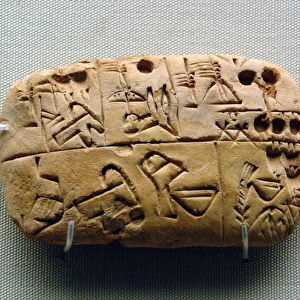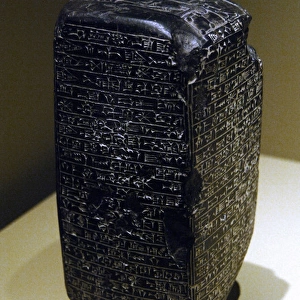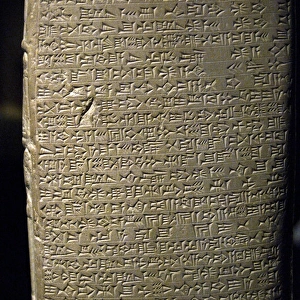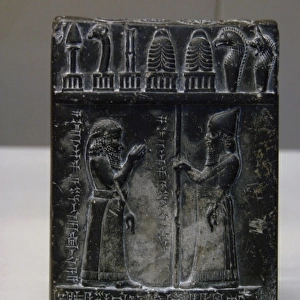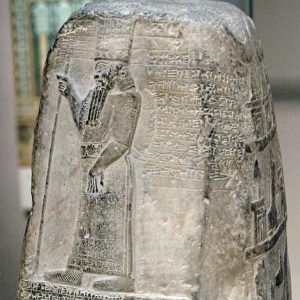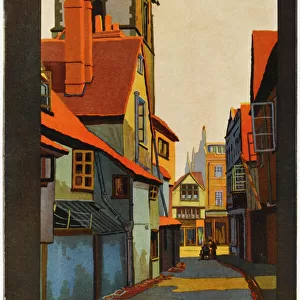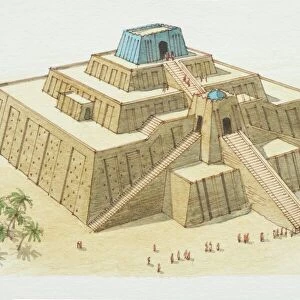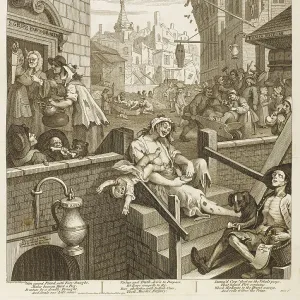Canvas Print > Europe > United Kingdom > England > London > Museums > British Museum
Canvas Print : Mesopotamia. Clay foundation peg. 1st Dynasty of Lagash. 240
![]()

Canvas Prints from Mary Evans Picture Library
Mesopotamia. Clay foundation peg. 1st Dynasty of Lagash. 240
Mesopotamia. Clay foundation peg. 1st Dynasty of Lagash. 2400Bc. From Bad-Tibira. Iraq. British Museum. London. England. United Kingdom
Mary Evans Picture Library makes available wonderful images created for people to enjoy over the centuries
Media ID 14337748
© Thaliastock / Mary Evans
Antique Clay Clove Cuneiform Dynastic Dynasty Foundation Inscribed Inscription Iraq Lagash Mesopotamia Mesopotamian Nail Sumer Sumerian
21"x7" (53x18cm) Canvas Print
Bring the ancient world into your modern home with our exquisite Canvas Prints from the Media Storehouse collection. This mesmerizing image, "Mesopotamia. Clay foundation peg. 1st Dynasty of Lagash. 2400BC" from Mary Evans Prints Online, transports you back in time. Witness the intricate detail of this clay foundation peg from the ancient city of Bad-Tibira, Iraq, dating back to the 1st Dynasty of Lagash around 2400BC. Housed in the British Museum, London, England, this historical artifact is now a stunning addition to your walls. Our high-quality canvas prints are carefully produced using vibrant inks and premium materials, ensuring a long-lasting, museum-quality display. Elevate your space with a touch of history and culture.
Delivered stretched and ready to hang our premium quality canvas prints are made from a polyester/cotton blend canvas and stretched over a 1.25" (32mm) kiln dried knot free wood stretcher bar. Packaged in a plastic bag and secured to a cardboard insert for safe transit.
Canvas Prints add colour, depth and texture to any space. Professionally Stretched Canvas over a hidden Wooden Box Frame and Ready to Hang
Estimated Product Size is 17.8cm x 53.3cm (7" x 21")
These are individually made so all sizes are approximate
Artwork printed orientated as per the preview above, with portrait (vertical) orientation to match the source image.
FEATURES IN THESE COLLECTIONS
> Arts
> Artists
> S
> Sumerian Sumerian
> Asia
> Iraq
> Related Images
> Europe
> United Kingdom
> England
> London
> Museums
> British Museum
> Europe
> United Kingdom
> England
> London
> Related Images
> Europe
> United Kingdom
> England
> London
> Sights
> British Museum
> Europe
> United Kingdom
> England
> Posters
> Europe
> United Kingdom
> England
> Related Images
> Europe
> United Kingdom
> Related Images
> Historic
> Ancient civilizations
> Mesopotamia
> Ancient Mesopotamian art
EDITORS COMMENTS
This photograph showcases a clay foundation peg from the ancient city of Bad-Tibira, located in the Mesopotamian region of modern-day Iraq. Dating back to approximately 2400 BC, this artifact is a testament to the rich history and cultural significance of the 1st Dynasty of Lagash during the Early Dynastic Period. The 1st Dynasty of Lagash was a prominent political and cultural power in the Sumerian city-state of Lagash, which is now part of southern Iraq. This era is marked by the reign of several notable rulers, including the legendary King Entemena, who is renowned for his military conquests and architectural achievements. This particular clay foundation peg, which measures around 12 cm in length, was discovered at the archaeological site of Bad-Tibira. It features an intricately inscribed cuneiform text, which provides valuable insights into the administrative and historical records of the time. The text includes the name of the ruler who commissioned the construction project for which this peg was used, as well as the date and location of the project. The clay peg is a prime example of the advanced writing system and architectural techniques that were employed during the Sumerian civilization. The use of cuneiform inscriptions on foundation pegs was a common practice during the Early Dynastic Period, as it allowed for the recording and preservation of historical information. Today, this precious artifact is housed in the British Museum in London, England, where it continues to inspire awe and fascination among scholars, historians, and visitors alike. The British Museum's extensive collection of Mesopotamian artifacts is a testament to the enduring legacy of the ancient civilizations that once thrived in this region, and this clay foundation peg from the 1st Dynasty of Lagash is a noteworthy addition to that collection.
MADE IN AUSTRALIA
Safe Shipping with 30 Day Money Back Guarantee
FREE PERSONALISATION*
We are proud to offer a range of customisation features including Personalised Captions, Color Filters and Picture Zoom Tools
SECURE PAYMENTS
We happily accept a wide range of payment options so you can pay for the things you need in the way that is most convenient for you
* Options may vary by product and licensing agreement. Zoomed Pictures can be adjusted in the Cart.





